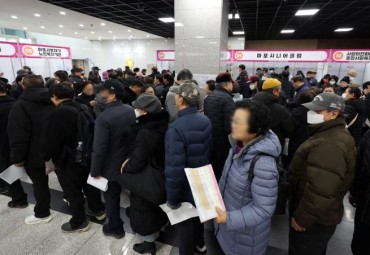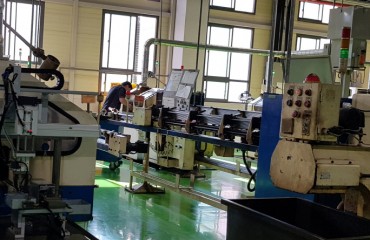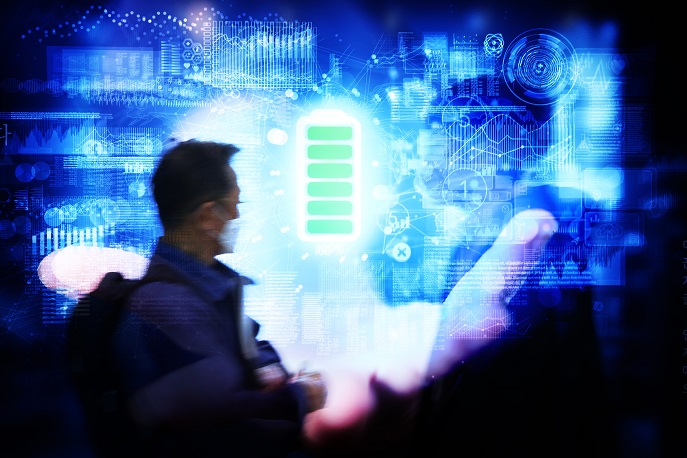
In the file photo taken Oct. 21, 2020, a visitor attends a battery industry fair at COEX in southern Seoul. (Yonhap)
SEOUL, May 22 (Korea Bizwire) — Despite the thriving global electric vehicle (EV) industry, South Korea’s trade balance in secondary batteries has unexpectedly shown a deficit for the first time this year, signaling significant changes in the market, a trade body said Sunday.
The deficit in rechargeable batteries, which were previously recognized as a representative surplus product, can be attributed to major market shifts, including aggressive overseas investments by Korean battery companies and the surge in demand for automotive batteries driven by the domestic EV market’s rapid growth.
The export value of “lithium-ion storage batteries” (classified under HS 6 units) reached US$2.5 billion in the January-March period, while imports amounted to $2.98 billion, resulting in a deficit of $480 million, according to the data from the Korea International Trade Association (KITA).
This marks the first time since 2012 that this category has incurred a deficit.
The secondary battery surplus had been increasing since 2012, peaking at $3.43 billion in 2019. However, it has been on a downward trend since then, with a surplus of $1.65 billion in 2022, eventually turning into a deficit this year.
This shift is mainly due to the fact that while South Korea’s finished battery exports have been steadily increasing, imports of finished batteries have been growing at a faster pace.
During the first four months of the year, secondary battery imports grew by 104.8 percent, surpassing the 19.4 percent increase in exports over the same period.
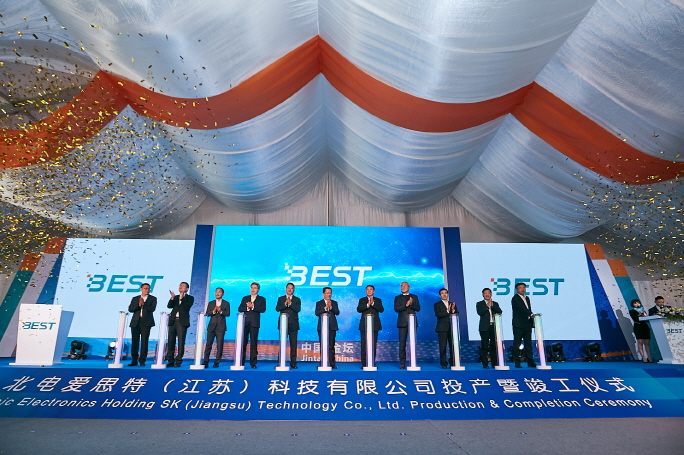
This photo, provided by SK Innovation Co., shows officials from SK Innovation, Beijing Automotive Group and Beijing Electronics at the completion ceremony for their EV battery cell manufacturing joint venture BEST in Changzhou, China, on Dec. 5, 2019.
One reason for this change is that Korean battery companies have aggressively expanded their overseas production capacity in response to changes in the international supply chain order, triggered by the U.S. Inflation Reduction Act (IRA).
As Korean companies have increased their battery manufacturing abroad, the growth rate of Korean-made battery exports has slowed down, while the “reverse imports” of K-batteries produced in overseas factories, particularly in China, have surged.
LG Energy Solutions Ltd. supplies batteries from its Nanjing, China, plant to global automakers like Tesla, while SK On Co. operates battery plants in Changzhou, Huizhou, and Yancheng, China.
Out of the $2.98 billion in secondary battery imports from January to April, China accounted for approximately 95 percent, at $2.83 billion.
The Ministry of Trade, Industry, and Energy has revealed that a majority of the recently imported secondary batteries were produced overseas by Korean companies and sent to domestic customers.
The surge in domestic demand for EV batteries has also led to increased imports of Chinese batteries, including those produced by Korean companies.
Hyundai Motor Group, for instance, has been equipping its vehicles, such as the Kia Corp.’s EV6, Kona, and Niro, with batteries from China’s CATL, the world’s leading battery manufacturer.
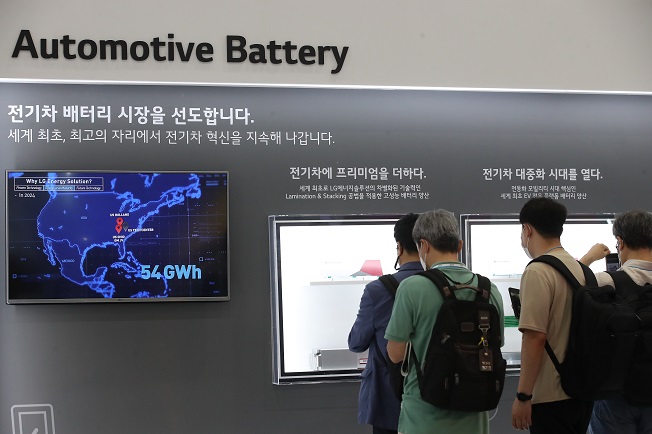
Visitors look around an LG Energy Solution booth at the InterBattery 2021 at COEX in Seoul on June 9, 2021. (Yonhap)
While the balance of finished battery products has shifted into a deficit, it is important to note that South Korea continues to seize value-added opportunities amid the supply chain transformation.
Notably, exports of cathode materials, a crucial component for secondary batteries, reached $1.33 billion in April, representing an 85.3 percent increase compared to the same month last year.
Experts emphasize that while finished battery exports may appear slower than before, the battery industry still contributes significantly to South Korea’s exports in different forms.
They highlight the clear growth trend in the export of high-value materials like anode and cathode materials.
Amidst these rapid changes, officials from the Ministry of Trade, Industry, and Energy emphasize the robust long-term growth potential of the battery industry.
They also suggest that the government should consider supporting overseas factory construction to maintain a competitive edge against China in the battery market.
Cho Sang-hyun, head of the International Trade and Commerce Research Center at the KITA, highlights the positive contribution of overseas investments to exports, as many equipment and components are exported domestically, even if battery factories are built in Europe or the U.S.
Kevin Lee (kevinlee@koreabizwire.com)




